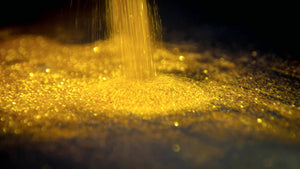Gold Demystified Part 2
I’ve written about the different types of gold and carat vs karat. I think it’s important to know about the materials you buy, so here’s more information about this popular metal.
We don’t have a date letting us know when gold was first used to adorn humans; we do have earliest evidence of it being used in Egypt 3,000 B.C.
Pure gold is the most non-reactive of all metals. That’s why gold doesn’t tarnish or rust; it won't react with oxygen or most chemicals. This makes it perfect for use in jewelry and objects that are intended to retain their value and finish indefinitely.
It's also very pure in the form in which it's found naturally, unlike many other metals which can be difficult to extract from their ores.
Gold is precious in that it is relatively rare and usually difficult to extract in large quantities. The World Gold Council reported, “The best estimates currently available suggest that around 197,576 tonnes of gold has been mined throughout history, of which around two-thirds has been mined since 1950. And since gold is virtually indestructible, this means that almost all of this metal is still around in one form or another. If every single ounce of this gold were placed next to each other, the resulting cube of pure gold would only measure around 21 meters on each side.”
Since gold is precious, it is extremely expensive. So if you see inexpensive or cheap gold jewelry, check and see if it is actually gold. It’s likely to be gold fill, plated or vermeil. These are not “bad” materials, but they aren’t gold and I don’t want you to get something other than gold if that's what you want. I also want people to understand why jewelry using gold or gold-fill is much more expensive that gold-plated jewelry. Simply put, there is more gold used in the former examples and less used in the latter.


